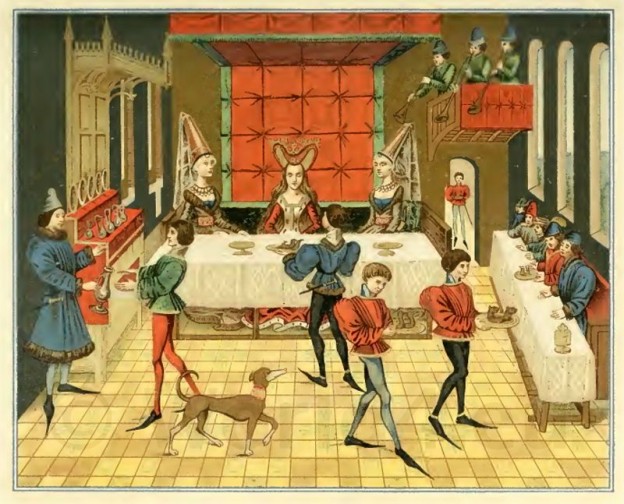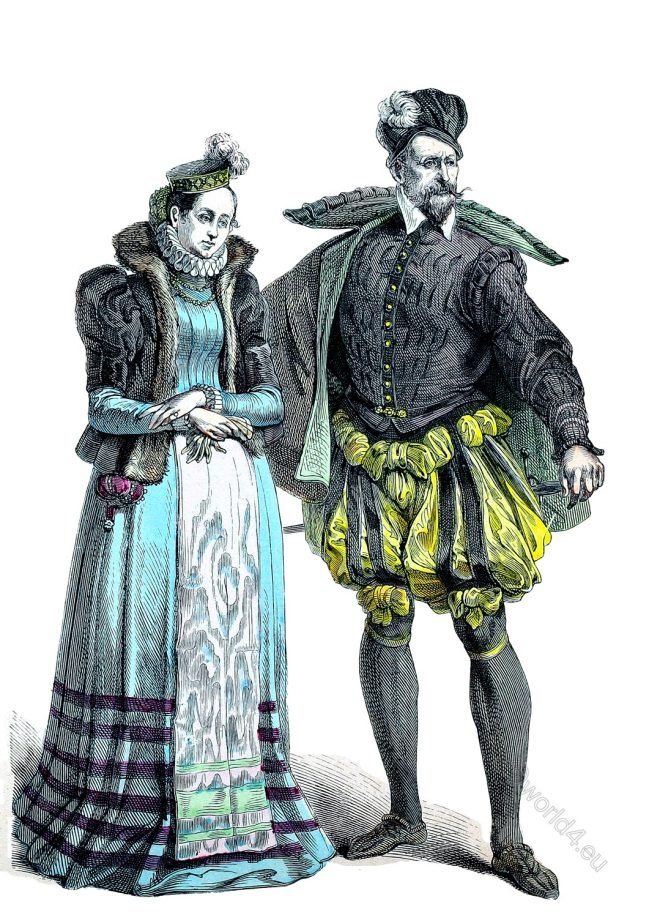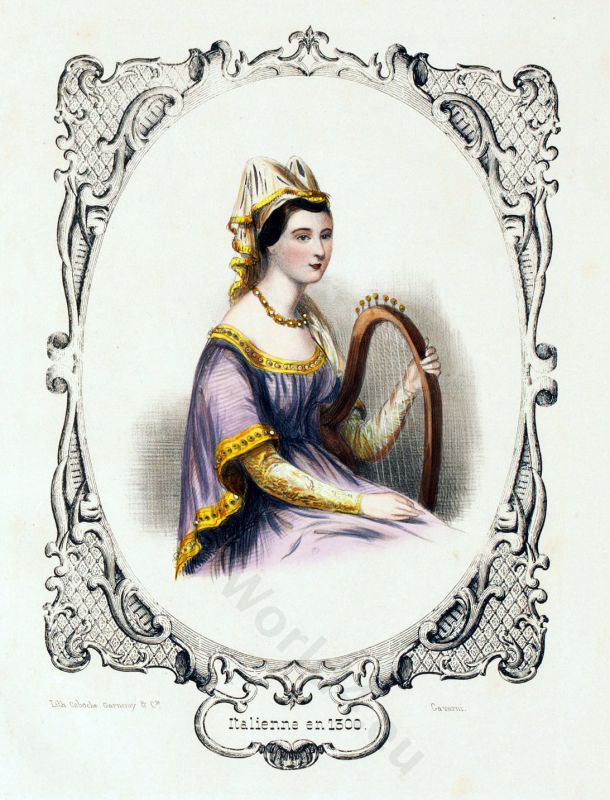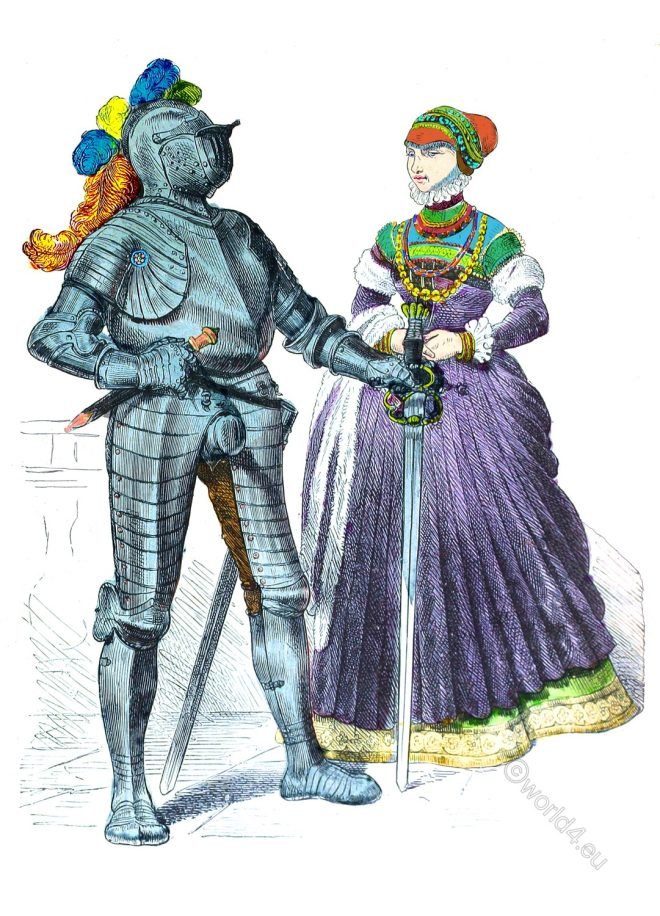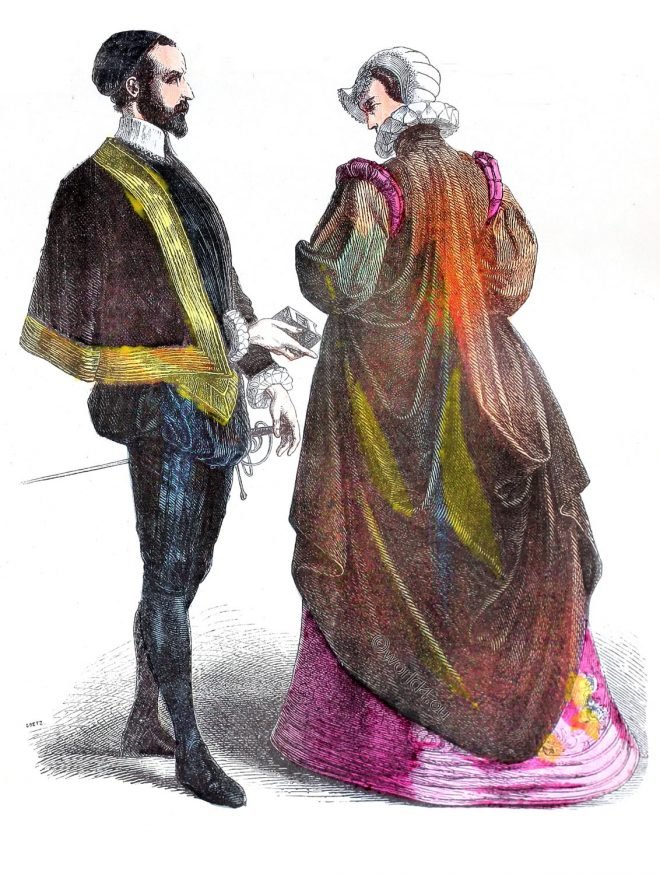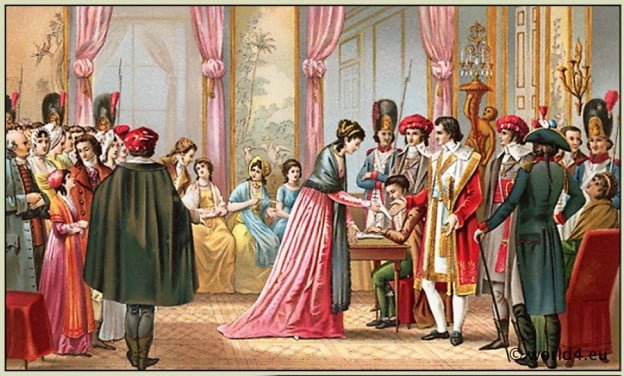Medieval court etiquette. The lady of the castle. 15th century. Étiquette de la cour médiévale.
Category: Court dress
Carolingian clothing 751-987. Queen, noblewoman and prophetess.
Carolingian clothing 751-987. Carolingian Queen, Noblewoman and Prophetess.
Charles II the Bald. West Frankish king 9th century.
Charles II the Bald (823–877 Holy Roman Emperor Charles II, King of West Francia), with Military Leader, Knight in armor, Musician.
French fashion history. Middle Ages. 1422 to 1483.
French fashion history. Middle Ages. 1422 to 1483. Reign of Charles VI, called the Beloved (French: le Bien-Aimé), Charles VII, called the Victorious (French: le Victorieux) and Louis XI. called “Louis the Prudent” (French: le Prudent).
French Nobility costumes. Last third of the 16th century.
French Nobility costumes. Last third of the 16th century. On the history of costumes. Eighth sheet. Last third of the XVI century. Illustration by W. Heil. Munich Bilderbogen No. 382. French… Read More
Italian noblewoman with heart shaped hennin. 13th century.
Italian noblewoman. Burgundy fashion era. Medieval 13th century clothing. Here hair is confined by a net called a crespine or crespinette. She wears a headwear, the white colored barbette with veil (Still seen on… Read More
Knight and noblewoman. Last third of the XVIth century.
On the history of costumes. Thirty-eighth sheet. XV. and XVI. century. Knight and noblewoman. Last third of the 16th century.
French nobleman and noblewoman in court dress. 16th century.
French nobleman and noblewoman. Fashion of the late Renaissance and Spanish Baroque in the period between about 1550 and the Thirty Years War around 1620.
Medieval gothic costumes. German princess and maid of honor, 1350.
The princess wears a one-piece, front buttoned dress Cotehardie called, with long tight sleeves and wide neckline (front and rear). Buttons presented at that time a novelty, instead of the lateral lacing allowed a figure-hugging dresses section.
The Days of the Directoire. Costumes under the French Revolution.
Costume under the Revolution; Versailles no longer the arbiter of the mode – Anglomania, “Anticomania,” Rousseau, and a “return to Nature ” – Blonde perukes – Dresses à la Flore, à la Diane, etc. – The classical cothurnus; the “balantine ” – Pink silk tights and gauze veiled nudities – Impossibles and Incroyables; masculine dress à la Anglaise – Official costumes of National Representatives and of Directors – Barras’ little joke – A lady on contemporary fashions in Paris.

